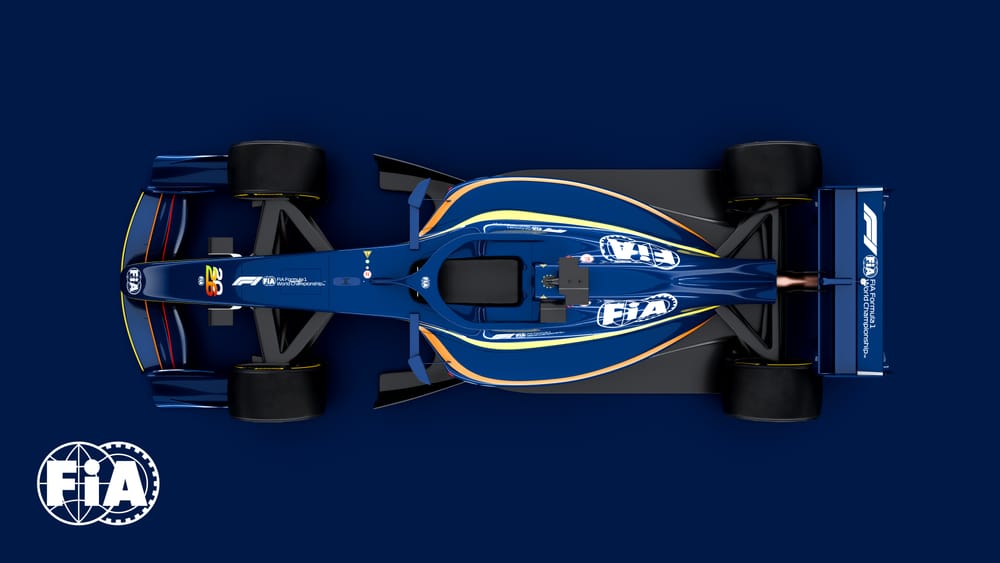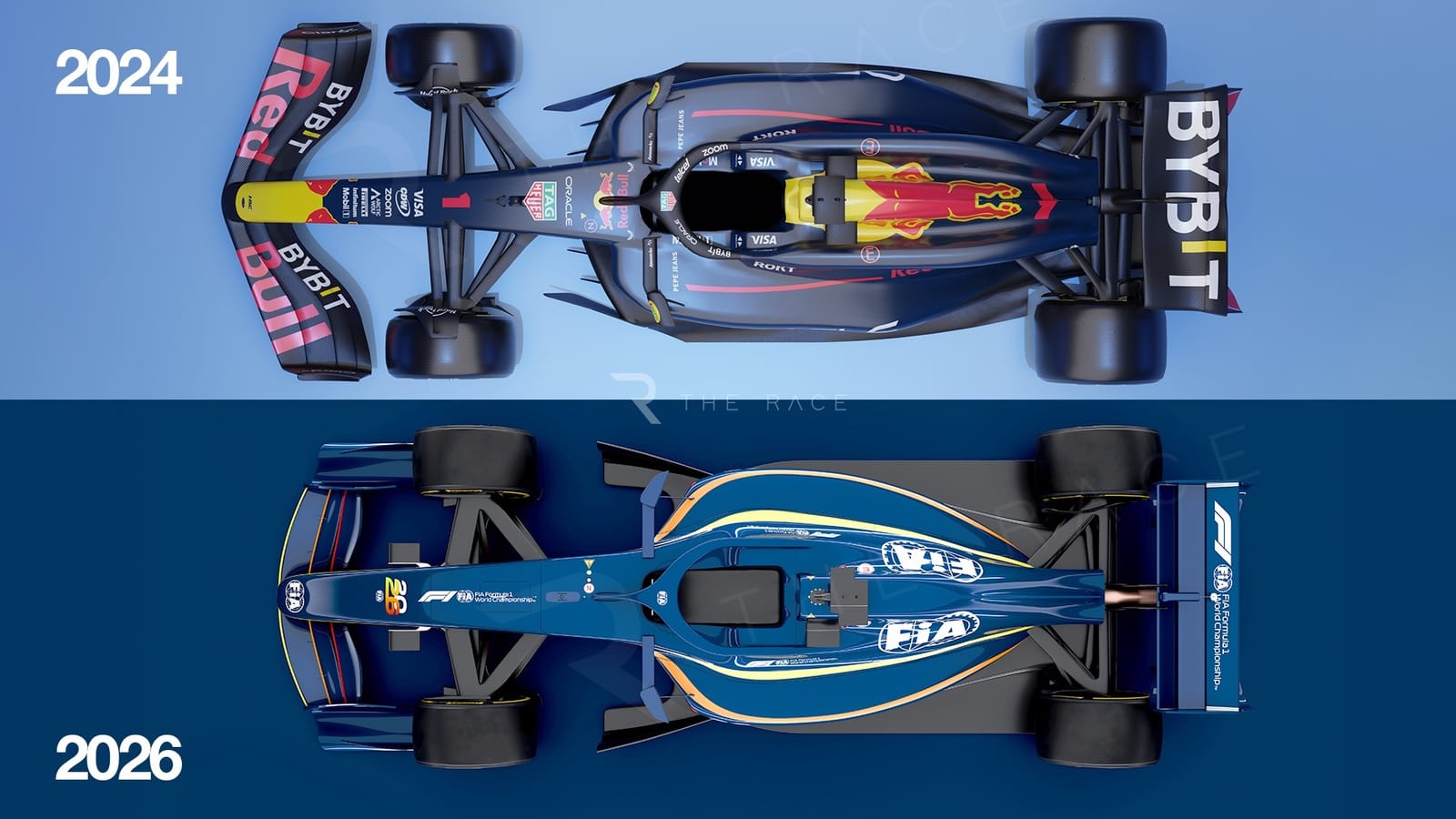Up Next

Formula 1 teams doubt how achievable some of the FIA’s objectives are for the 2026 rules, following the public release of concept images and information this week.
Although the 2026 regulations have not been finalised – with approval due to come later this month by the FIA’s World Motor Sport Council – there was a significant announcement by the governing body on Thursday at the Canadian Grand Prix.
As well as showing a first official look at the baseline concept for the new rules, the FIA shared significant details including the car’s performance profile, weight reduction objective, and new active aerodynamics.
This is despite the regulations still being in flux, with some changes even being made this week, and discussions ongoing between the Technical Advisory Committee – which can actually steer regulatory changes – and on a bigger level between major stakeholders.
The 2026 rules will form a key part of a semi-regular meeting between F1 and FIA bosses and senior team figures in the Montreal paddock on Saturday, the same day an FIA press conference on the regulations will be held.
The message from several teams so far is that the objectives outlined in the FIA’s published plan this week are not achievable with the rules in their current form.
This is not a complete dismissal of the proposals but a feeling that they are ill-defined and in need of improvement rather than a total write-off.
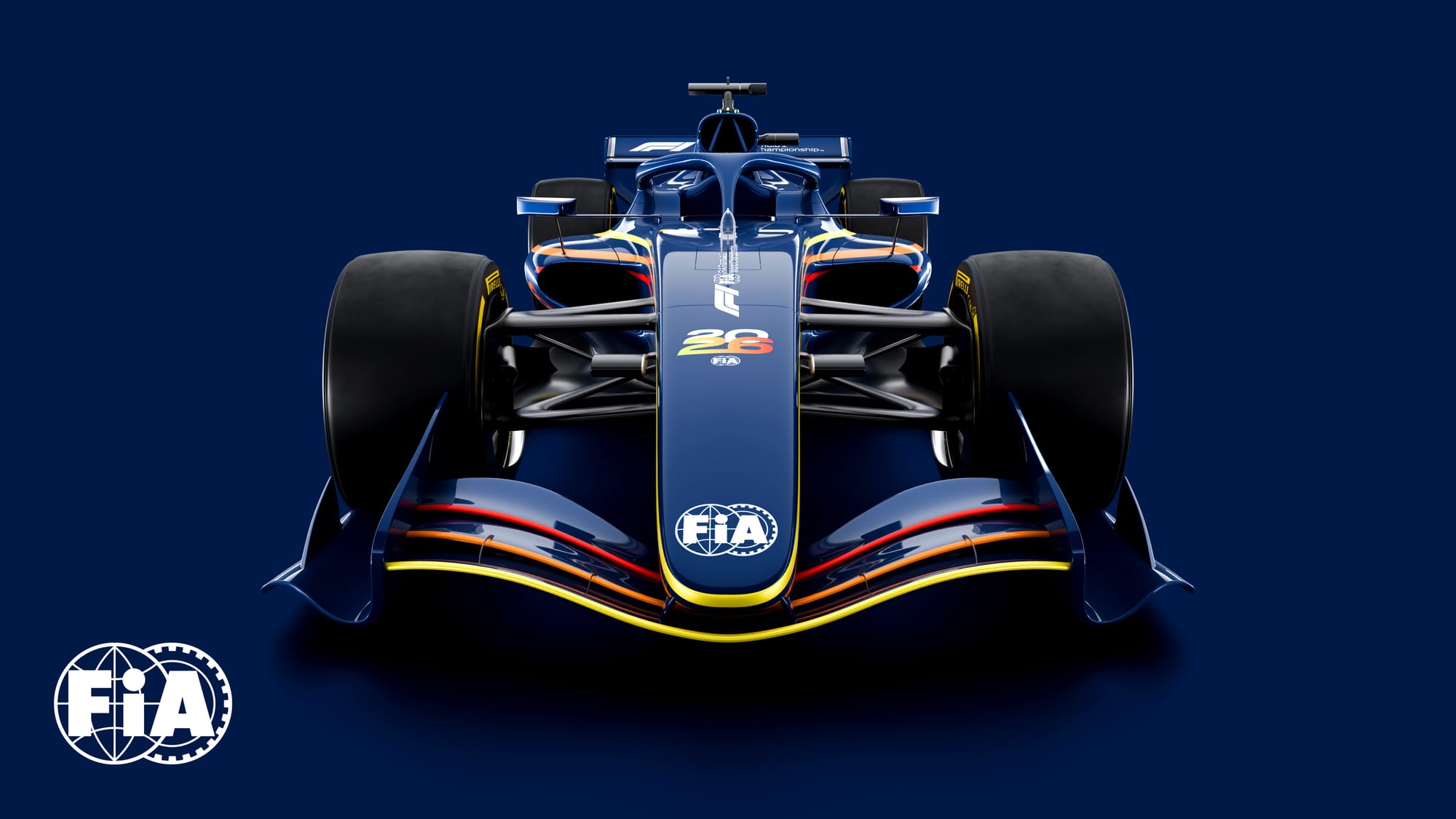
Aston Martin team principal Mike Krack described what the FIA shared as a “first publication” whereas “we are quite far away still from the final one”. His McLaren counterpart Andrea Stella went even further, though.
While Stella stressed McLaren supports the intent and objectives “at high level” in the 2026 rules, he said the draft regulations that the teams are obviously aware of – in their current form – “are still far from being able to achieve the agreeable objectives and intent”.
One of the pressure points is an end-of-June deadline to approve significant parts of the technical regulations, per the FIA International Sporting Code, before F1’s governance leaves it at the mercy of requiring significant agreement to make changes to major items that are likely to draw different opinions.
CAR PERFORMANCE OUT OF KILTER

One of the details shared by the FIA on Thursday was how dramatically the cars’ performance profile will change for 2026.
A 55% reduction in drag and 30% reduction in downforce will be achieved by a combination of altered car dimensions, new engines, overhauled active aerodynamics and reduction in the power of the ground effect through changes to the floor and diffuser.
That, quite obviously, will result in a very different F1 car – one that is slower through the corners and a lot faster on the straights. It is directly linked to the drag reduction system in its current form being dropped and replaced with a combination of a push-to-pass-style system from the hybrid, and moveable front and rear wings to create low-drag modes.
The active aero has drawn some concerns because while the low-drag mode will be driver activated and can be manually reverted to the normal setting, it will also have automated elements similar to the current DRS in that touching the brake should reset it too. Some teams want to better understand how the whole concept will work.
But it is the performance aspect of the aerodynamic plans – including physically how fast the cars will be – that is one of the main concerns raised. Stella said, simply, that: “The way cars are in the draft regulations, they are not fast enough in the corners and too fast on the straights. These aspects need to be rebalanced.”
Williams team boss James Vowles believes the “mismatch” in cornering and straightline speed risks negating F1’s laptime advantage over the Formula 2 feeder series to “as small as a few seconds” – which would leave F1 vulnerable to being surpassed by other top level series in terms of pure performance.
Another aero element that Vowles raised was the lack of freedom in the draft regulations, which Williams chief technical officer Pat Fry said needed to be opened up.
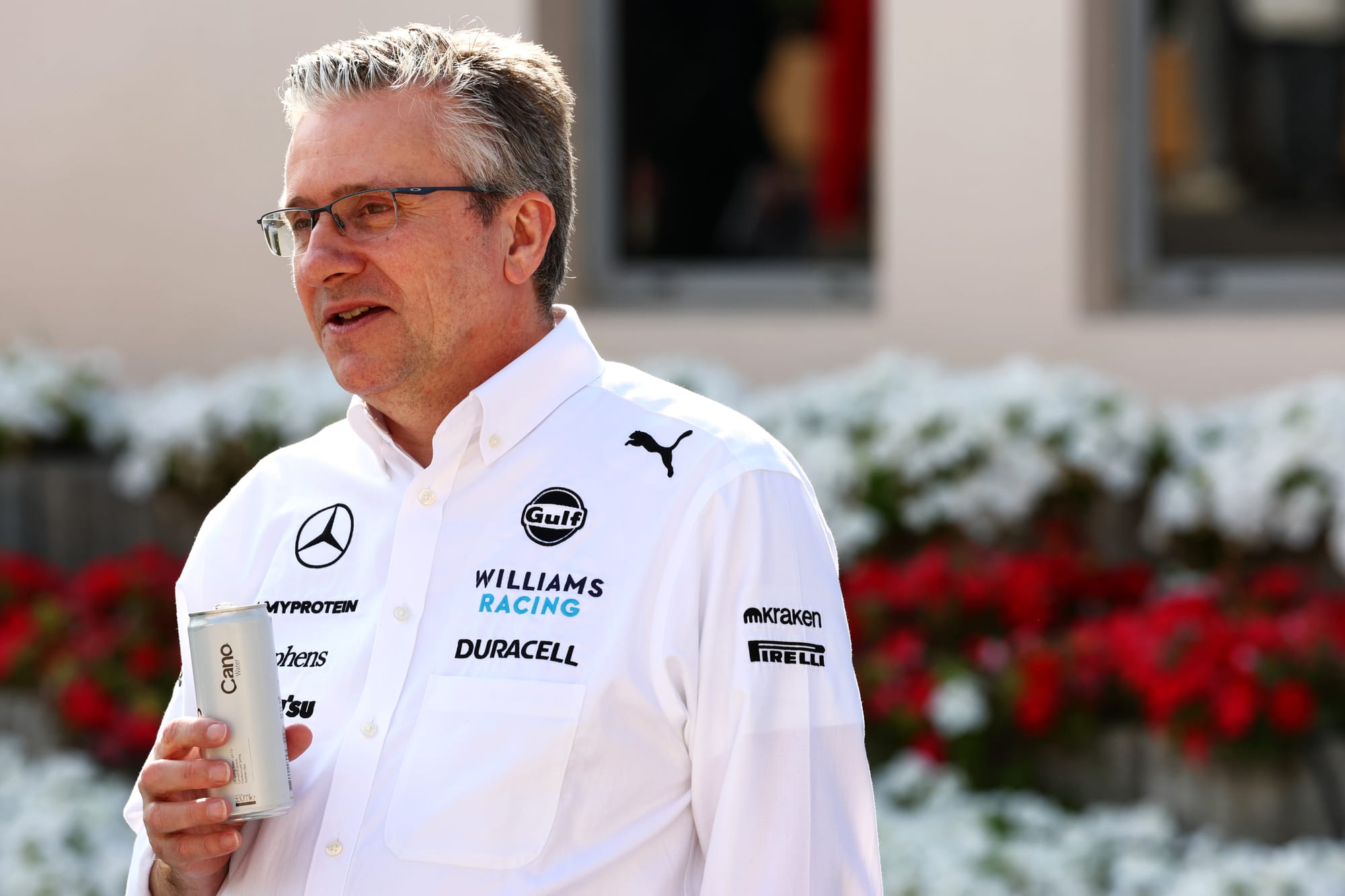
“Yes, it is very light on downforce at the moment, but it’s very easy to scale it slightly and get to somewhere which could be workable,” he said.
“We engineers always moan about the restrictions and how heavily prescribed it is, and it is massively heavily prescribed.
“But it is relatively straightforward because I guess the FIA have gone in, said ‘this is what we want’, written some rules and have got to give us some scope to actually adjust.
“There are quite a lot of flow structure challenges, so we need some freedom to try and fix.”
CHASSIS RULES NEED ENGINE HELP

As the 2026 power unit regulations were originally published in August 2022, the emphasis in achieving what Stella calls the intent and objectives of the regulations is on the chassis rules.
Asked by The Race to elaborate on his questions about the effectiveness of the rules in achieving these objectives, Stella pointed to the need for the power unit regulations to be modified.
“The main gaps are in article three, which is the aerodynamic regulations, and the second one is the way in which the power units are planned to be used needs to be adjusted,” he said.
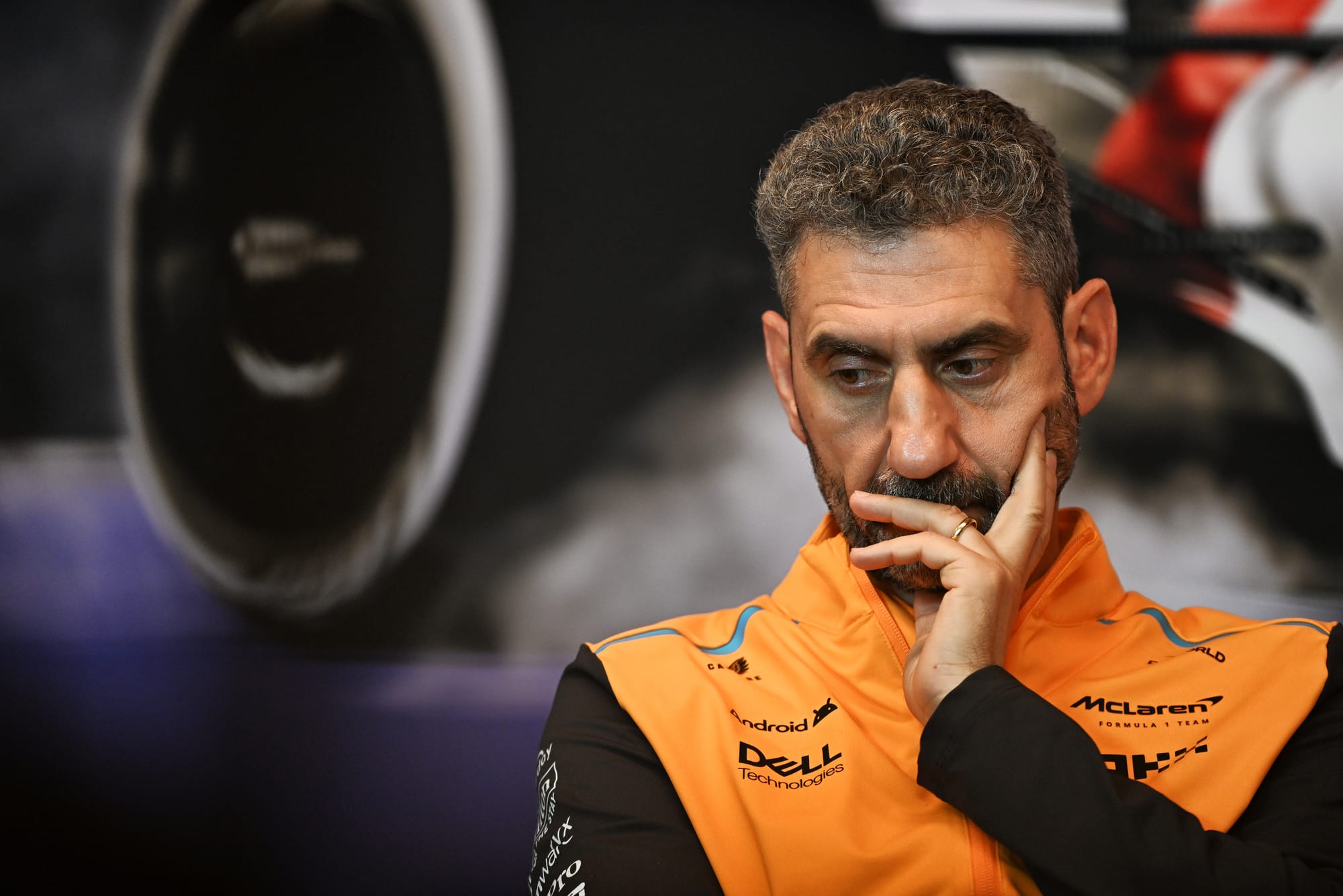
“We can still achieve a 50/50 concept [in terms of the contribution of internal combustion energy power output and electrical power output], but it can be achieved in a way that doesn’t put so much of a requirement on the chassis side, which then is difficult.
“From a power unit point of view, likewise, from a chassis point of view, it's time that all parties understand that they need to contribute to the success of this.”
Stella’s reference to “all parties” points to the engine manufacturers, the majority of which are unlikely to want to modify the rules given they are already well advanced in terms of development. But what Stella says reflects the fact that these rules have been framed around the power units first, in order to satiate the desires of the manufacturers, with the chassis rules being used to offset the problems this creates in terms of the performance.
In order to get the necessary engine power, measures such as an increase in the fuel flow limit could be adopted. However, that would change the 50/50 power split Stella refers to. Therefore the answer could lie in the wider power management regulations.
Whether the engine manufacturers would be willing to make such changes given the regulations have been set for almost two years is another question.
UNREALISTIC WEIGHT LOSS?
The 30kg reduction in minimum weight, dropping it from the current 798kg, is a popular objective – Max Verstappen called it “the perfect scenario” - but one that teams have serious concerns about hitting. What’s called the “minimum mass” in the regulations is just a number and there are legitimate questions about whether it’s a realistic target.
“I’ve been vocal already from a Williams perspective, but I don’t think anyone will hit that weight target particularly, it’s going to be incredibly difficult,” said Vowles. “And that needs reviewing, because [for] someone who spends their life going through marginal gains taking the weight out of the car, it's not a fun thing to do.”
Aston Martin driver Fernando Alonso has also raised concerns, describing hitting the 30kg weight reduction as impossible because of the weight of the power unit.

“If you put the power unit [to] being 50% electric and you need the batteries to support that, the cars and the tyres are heavier as well,” said Alonso. “Cars will increase 20 or 30kg because of the power unit. And then you want to reduce it, so in theory you need to drop 60kg of the current car, which seems at the moment probably to the team an impossible target.”
It should be noted that the minimum weight rule is not mandatory and there’s no philosophical obligation for teams to run at it. However, it’s clearly an important objective given the laptime cost of extra weight and the other disadvantages in terms of the extra energy that puts through the tyres.
Fry hinted that provisions to accommodate the weight of heavier drivers – set in the current rules at 80kg – have been rolled back in the draft 2026 regs. So rather than the cars being the minimum weight plus 80kg for the driver, in 2026 they would be the minimum weight plus whatever the driver happens to weigh - bad news if you’re taller and heavier.
“They [the FIA] would rather challenge us with the rules, particularly on the weight side of things so we have got to make sure that the driver weight is sensible and we don’t compromise the heavier driver, which was initially in there and then they backtracked on it so we want to get that back,” said Fry.
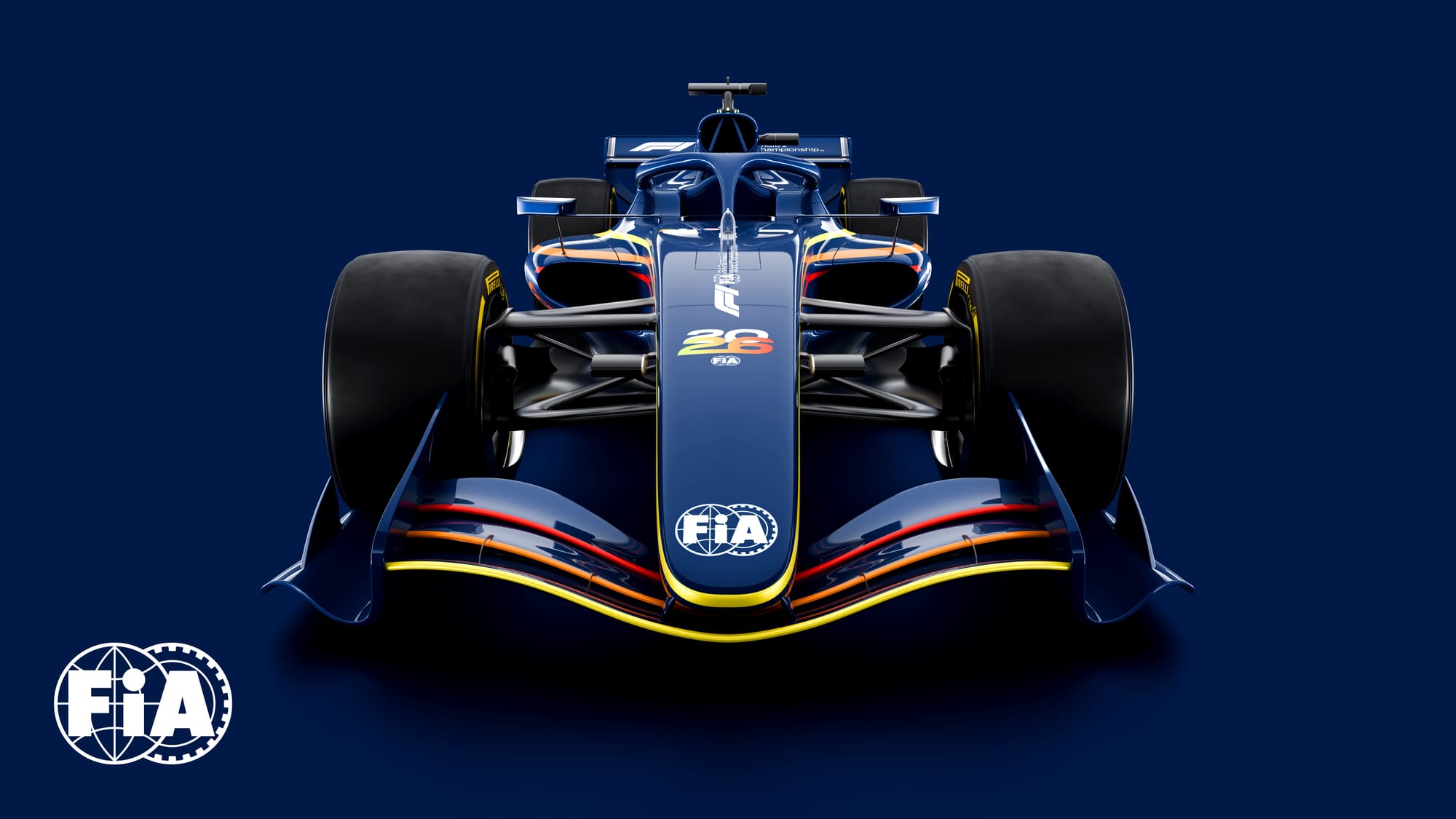
“The size of the weight challenge is absolutely massive. It’s quite a heavy power unit, battery pack, all of that side of things, and with the chassis rules going up. It is a monumental challenge, so that is something where we need to be sensible and compromise.
“It’s almost as if we are driving blindly down the route of ‘well, if we can make the car lighter it will go quicker’ and ignoring the fact that hardly anyone is going to get anywhere close to it. And obviously the closer you get the more expensive it gets.
“So you almost need to come up with a target that is hard but achievable and then drive it down year after year and have an escalator or something to recover it. All of that stuff has been talked about and maybe it will come back or maybe not.”

